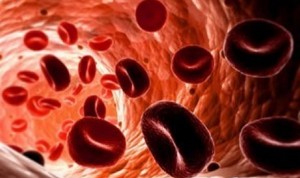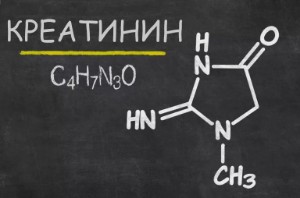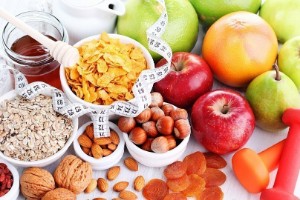Tips on how to increase potassium levels in the human body and blood — Top 9 foods
 For the normal functioning of the heart and cardiovascular system, a trace element such as potassium is vital. Potassium deficiency can be observed in people of different ages, but most often people aged 50 years and older face the problem of lack of this substance.
For the normal functioning of the heart and cardiovascular system, a trace element such as potassium is vital. Potassium deficiency can be observed in people of different ages, but most often people aged 50 years and older face the problem of lack of this substance.
Many doctors immediately advise taking medications or dietary supplements containing potassium, but not everyone is ready to load their body with pills, albeit conditionally safe ones.
It will be useful for such people to find out which foods contain potassium in order to be able to make up for the deficiency of the substance in a natural way.
This article is based on &171;Guidelines on potassium intake for adults and children&187; , which was released by the World Health Organization (WHO) in 2012, the full text of which you can read here is .
Content
What functions does an element perform in the body?
Potassium, along with other macro- and microelements, is designed to support the normal functioning of our body. Here are some important roles that it performs:
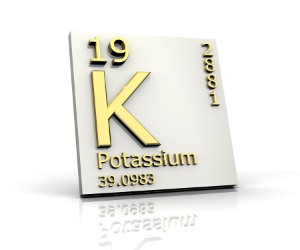
- Regulation of acid-base balance in the blood;
- Active participation in water-salt metabolism;
- Activation and transmission of nerve impulses (the ability to activate the potential of muscle contractions);
- Implementation of protein synthesis;
- Normalization of the process of glucose transformation into glycogen;
- Normalizes the work of the cardiovascular system and the urinary system.
Significant deviations from the norm of Kalium in the blood almost immediately cause changes in the body at the intracellular level.
Blood content standards
Indicators of potassium (kalium) in the blood depend on many factors, therefore, if you have received a biochemical blood test and hardly understand what all these numbers mean, then you should contact a specialist for decoding.
Standard indicators are averaged values. These indicators differ between children and adults.
Children
| Age | Standard |
| Up to a year | 4-5.3 mmol/l |
| From 2 to 14 years old | 3.2-4.7 mmol/L |
| From 15 to 18 years old | 3.4-4.7 mmol/L |
Adult men
| Age | Standard |
| From 19 to 35 years old | 3.4-5.5 mmol/L |
| After 35 years | 3.6-4.7 mmol/L |
| 50 years and older | 4-5.2 mmol/l |
Adult women
| Age | Standard |
| From 19 to 35 years old | 3.4-5.5 mmol/L |
| After 35 years | 3.2-4.6 mmol/L |
| 50 years and older | 3-4.3 mmol/l |
During pregnancy, the indicators may change slightly. Usually, the norm at this time is 3.3-5.4 mmol/l. After childbirth, these values decrease due to the severe stress and blood loss that the body is experiencing. If no deviations are detected during this time, then the indicators will return to normal on their own within 1-1.5 months.
Tests should be taken strictly on an empty stomach, and the day before you can not eat salinity, spices, pickled food, alcohol, coffee and caffeinated products.
Top 9 Potassium-rich Foods
There are many more foods that increase blood potassium levels than it might seem. However, there are usually nine most popular foods that are mandatory for people with a deficiency of Kalium in the blood.
1. Potatoes
 Perhaps many people know that potatoes are a storehouse of potassium. In childhood, parents did not offer potatoes "in a uniform" with the words "there is a lot of potassium in it."
Perhaps many people know that potatoes are a storehouse of potassium. In childhood, parents did not offer potatoes "in a uniform" with the words "there is a lot of potassium in it."
One small potato contains an average of 950-1000 mg of potassium, which is almost 1/6 of the daily value for an adult. In addition, potatoes contain starch, carbohydrates, vitamin C and B6, fiber and iron.
2. Dried apricots
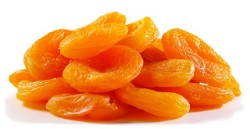 Dried apricots, beloved by many, are not only a hearty snack, but also a rich source of vitamins and useful trace elements. There are about 1,170 mg of potassium per 100 grams of dried apricots, which is rarely found in other foods.
Dried apricots, beloved by many, are not only a hearty snack, but also a rich source of vitamins and useful trace elements. There are about 1,170 mg of potassium per 100 grams of dried apricots, which is rarely found in other foods.
Active elements, of course, are also contained in fresh apricots, but in the dried version the concentration increases significantly. So if you don't know what to take as a snack to work or study, then dried apricots will be an excellent and useful choice.
3. Pumpkin
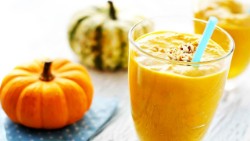 For sure, the heroes of J. K. Rowling's Harry Potter books did not have problems with potassium in their blood, since pumpkin was a popular food item for them. Almost all pumpkin varieties contain a large amount of Kalium (100 grams of the winter variety contains about 450 mg of the substance, and 100 grams of the acorn variety contain about 440 mg).
For sure, the heroes of J. K. Rowling's Harry Potter books did not have problems with potassium in their blood, since pumpkin was a popular food item for them. Almost all pumpkin varieties contain a large amount of Kalium (100 grams of the winter variety contains about 450 mg of the substance, and 100 grams of the acorn variety contain about 440 mg).
So if you see a ripe and beautiful pumpkin on the counter, grab it and don't hesitate. Moreover, the Internet is full of recipes containing this vegetable as the main ingredient. Also pumpkin is very good for the heart and blood vessels .
3. Dried tomatoes
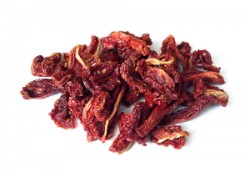 Dried (dried) tomatoes, like dried apricots, contain many useful elements, including potassium. In fact, both fresh tomatoes and tomato paste also contain potassium, but you should still choose the dried version.
Dried (dried) tomatoes, like dried apricots, contain many useful elements, including potassium. In fact, both fresh tomatoes and tomato paste also contain potassium, but you should still choose the dried version.
Purchased tomato paste most often contains a large amount of salt, preservatives and flavorings, so it does more harm than good. Eating a large amount of fresh tomatoes can lead to the development of an allergic reaction and gastrointestinal problems.
Dried tomatoes contain approximately 35-45% of the daily value Adult Kalium (about 1750 mg of the substance). In addition, the product is rich in vitamin C and E.
For more information about the effect of tomatoes on blood, see here →
5. Spinach
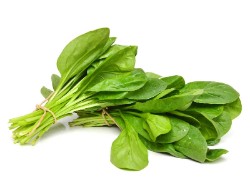 Spinach is not only an excellent side dish for fish and meat dishes and an ingredient for cleansing and toning smoothies.
Spinach is not only an excellent side dish for fish and meat dishes and an ingredient for cleansing and toning smoothies.
It is also an important product for people with potassium deficiency. There are almost 570 mg of potassium per 100 grams of lettuce leaves. They should be eaten every day without fear of harming the body.
6. Beans
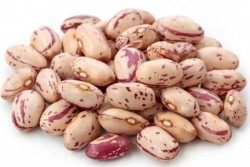 Beans are one of the few legume products that can be eaten for most diseases. Both red and white beans are equally good for your body.
Beans are one of the few legume products that can be eaten for most diseases. Both red and white beans are equally good for your body.
One glass of red beans contains approximately 700 mg of potassium, and a glass of white &8212; 1 gram. In addition, beans can boast a high amount of iron and protein in their composition, as well as fiber useful for digestion.
7. Salmon
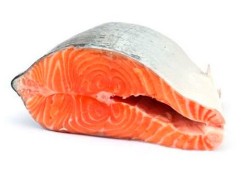 Salmon can often be seen in other tops that include vitamin-rich foods. In 100 grams of fish raw materials, you can count 640 mg of potassium, which is more than in any other kind of fish.
Salmon can often be seen in other tops that include vitamin-rich foods. In 100 grams of fish raw materials, you can count 640 mg of potassium, which is more than in any other kind of fish.
Salmon is also rich in omega-3, vitamin D and various fats. However, you should not get carried away with such products, especially for people suffering from gastrointestinal diseases (gastritis, pancreatitis, ulcers, etc.).
6 facts about the benefits of fish for the cardiovascular system →
8. Oranges
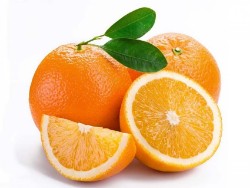 Suddenly, among dried and dried foods, perhaps the juiciest and freshest fruits in the world appeared.
Suddenly, among dried and dried foods, perhaps the juiciest and freshest fruits in the world appeared.
Freshly squeezed orange juice (in addition to the well-known vitamin C) contains vitamins of group D, folic acid and potassium. One glass of this juice will give your body about 490 mg of potassium.
9. Avocado
 Last on the list, but not in terms of benefits, is avocado. One such fruit contains more than a gram of potassium, as well as magnesium, phosphorus, zinc, iron, several vitamin groups and fats.
Last on the list, but not in terms of benefits, is avocado. One such fruit contains more than a gram of potassium, as well as magnesium, phosphorus, zinc, iron, several vitamin groups and fats.
On the web you can find a huge number of recipes for salads, smoothies, desserts containing avocado as an ingredient.
Other ways to increase it
In addition to treating hypokalemia with diet and diet correction, many resort to additional and alternative methods of raising potassium levels:
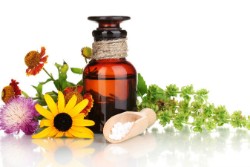
- Potassium preparations . The first thing that comes to mind is medication. Dietary supplements and potassium preparations are the leading methods of combating the symptoms of hypokalemia. However, only your doctor can select medications and dosage. Improper use of potassium preparations can lead to overdose and side effects;
- Recipes of folk remedies . The opposite option to drug therapy is treatment with folk remedies. Many herbs are natural potassium preparations. Properly prepared decoctions and tinctures will help to safely normalize potassium levels. But be prepared for the fact that this type of treatment will be longer in comparison with medication;
- Homeopathy . In recent years, more and more people have resorted to the help of homeopathy in matters of health correction. And for good reason. A professional classical homeopath can really work wonders. Do not confuse treatment with a homeopath and the use of "homeopathic" drugs from an ordinary pharmacy, only a licensed homeopathic physician can provide you with real homeopathic medicines.
And what reduces it?
Hyperkalemia is called an increased content of potassium in the blood serum. It is much more difficult to lower the level of Kalium with food than to increase it.
Nutrition features with increased potassium in the blood to reduce it, such as:
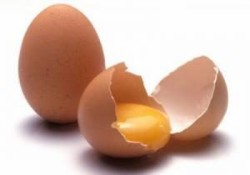
- Water . Plain water is an important element of a wellness diet that reduces potassium levels. A person with an excess of potassium needs to drink a large amount of clean water (up to 2.5 liters per day) in order to detoxify and remove excess substances from the body;
- Canned fish . Only low-fat varieties with a minimum of salt are allowed;
- Eggs . No more than one in 1 food serving;
- Fresh fruits . Most are allowed with high potassium. The main thing is to soak them in water for several hours before use to reduce the concentration of excess substance. It is acceptable to eat 3 servings of canned or fresh unsweetened fruits per day;
- Tofu cheese . No more than 100 grams per day;
- Meat and fish products . Choose low-fat meats and fish. They should be cooked without salt. Consume no more than 35 grams per meal;
- Fruit punches and creams without milk . Such products do not contain potassium.
Interesting video
And now we suggest you to familiarize yourself with the video:
Conclusion
Potassium deficiency in the body (hypokalemia) manifests itself as unpleasant symptoms that interfere with normal life. General weakness, muscle weakness, anemia, seizures, disorders of the central nervous system and cardiovascular system. Fortunately, a well-chosen diet will help to adjust the level of Kalium, which naturally normalizes metabolic processes in your body.



